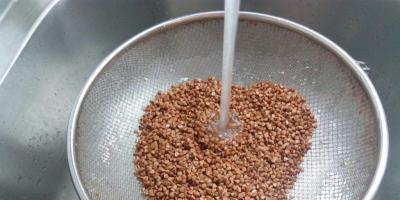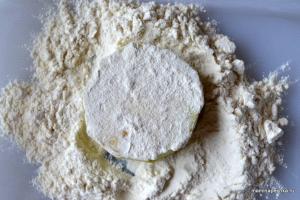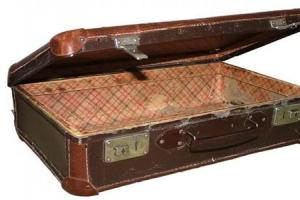Warm floors in the house are the key to the health of the whole family. Today there is a huge variety of types of heating. The most effective and popular is electric floor heating, which is easy to calculate and install. This method is very simple and economical to use; the principle of its operation is to heat the floor from a special heating cable, which is placed under the floor surface during installation.
The heating device is placed in such a way that the entire surface receives the same amount of heat, and the owner has the opportunity to regulate the heating power. Today you have the opportunity to learn how to calculate a heated floor, install it and prepare it necessary materials.
Collecting the necessary data
Warm floor is very comfortableBefore you purchase all the necessary materials, you need to take measurements of the room that is being prepared for insulation. At the same time, you need to take into account not only the floor area, but also the specifics of the entire room. Decide how much heating this room needs. It is also necessary to take into account the proximity of heating radiators or auxiliary heating equipment to avoid overheating of the room.
You will need to select the heating type:
- using heating cables;
- using ultra-thin floors.
Heating with heating cables is installed on the basis cement mortar using non-flammable lightweight materials. When purchasing a kit, make sure that all its components are available:
- section with heating cable;
- mounting tape;
- device for a heating sensor in the form of a corrugated tube.
The thermostat, which you will need to regulate the heating process, is usually not included in the overall system kit. Please note that the heating system uses two types of cables:
- two-wire;
- single-core
Each of them has its own purpose, but they work together, so make sure both cables are in order before purchasing.
 Laying heated floors
Laying heated floors Calculation depending on the room
To understand how to calculate an electric heated floor, you first need to calculate the exact (“net”) area of the room over which installation will be carried out. The concept of “clean” area means that surface of the room that is not occupied by any objects or furniture. In the picture below you can schematically see what the free space in your home looks like, in this case, the bathroom.
 Heating element layout
Heating element layout Insulation cables should not run under the sink, bathroom, or toilet; you should only use the usable area that needs heating. Thus, when calculating, you need to calculate the total area of large objects that are not located in the usable area. Then you need to subtract the previously obtained number from the total area of the room. As a result, you will get a “clean” area of your premises.
After this, you can begin to calculate the heated area, taking into account the previous data. Insulating cables should not only run on the usable area, they should be located away from the main furniture or plumbing fixtures. For example, if the usable area of your room is four square meters, then the heated area should be 3.9 square meters.
Note!!! If the furniture and plumbing in the room are close to each other, then you need to remove the heating cables as much as possible. The surface of the objects should not be in contact with the heated surface, in which case you need to calculate the heating per 3.8 square meters.
If the room area is very small, then it makes sense to purchase a miniature heating kit. Minor deviations will not play a big role, especially if we are talking about a toilet, you will not be in such rooms for long, and the floor in them does not need increased heating.
 In progress
In progress Thermal insulation for floors
 Thermal insulation
Thermal insulation Today, it is most logical to use extruded polystyrene foam for floor insulation; this method will save energy by reducing the degree of thermal energy emission in cases where it is not needed. Materials of this type help to increase the coefficient useful action to the maximum, which will save you from unnecessary costs.
Extruded polystyrene foam has such special characteristics as:
- high mechanical strength;
- excellent thermal insulation properties;
- effective and high-quality insulation of any surfaces.
Such material is capable of insulating even the thinnest layers of the floor for a long time and effectively, which other materials cannot do.
Typically, extruded polystyrene foam is mounted on the floor panel from above, only after that can all other parts of the heated floor kit be laid.
Note!!! Any installation of a heated floor requires a waterproofing and reinforcement procedure; instructions for these works are offered by each manufacturer individually, depending on the specifications of the insulation system.
Thermostats
 Thermostat
Thermostat Whatever type electric heating Whatever floor you choose, the thermostat will be its main part. You will have to purchase this element of the system separately from the entire kit. There are several types of thermostats:
- simple;
- difficult.
The device may have a liquid crystal screen, which will simplify operation of the controls. Complex thermostats have software, which allows you to create a customized floor heating schedule.
Any thermostat performs the following basic functions:
- regulates the required temperatures;
- protects the heating cable from overvoltage.
Obviously, complex thermostats will help you save a lot of energy, which without its operation will be wasted. Complex devices have a higher cost, but according to general estimates, such devices save from thirty to fifty percent of electricity. Therefore, it makes sense to purchase a more expensive thermostat in order to subsequently save on energy waste.
Choosing a cable for electric heated floors
Before deciding on the type of heating cable, calculate the power of the heated floor. Please note when calculating Special attention to the following factors:
- the exact area of the room that will be heated;
- type of room;
- types of heating used indoors.
If electric heating Since the floor is the main source of energy in the room, the heating area should be at least seventy percent of the total area of the room. Wherein electric power heating should be at least 150 watts.
 Heated floor installation kit
Heated floor installation kit If the visitation has primary heat sources and the floor is only supplementary heating, then the electrical power should be a maximum of one hundred and forty watts. This option is most often used in multi-storey buildings where there is a full-fledged heating system, and additional energy sources are most needed before or after the heating season.
Note!!! The electrical power of a heated floor is calculated per square meter.
Functional Features different rooms in the house will help you understand how to calculate the power of a heated floor. The fact is that not all rooms in the house require the same amount of heat. You need to take this fact into account when making calculations in order to create a comfortable atmosphere in your home.
Cable calculation for installing heated floors
 Cabling
Cabling The choice of one or another type of cable for insulation depends on the power required by the heating system. In order to get the desired result, you need to multiply the sum of the entire free area of the room by the power density of the system.
When calculating the cable, you must also pay attention to the type of room for which heating is being created. For rooms such as a loggia or balcony, the power density will be higher, but the kitchen and bedroom require less power density. When purchasing a heating kit, you can ask your consultant for a chart that will help you know exactly what power density your room needs.
To install underfloor heating in the rooms of your home, you need to know how to calculate a heated floor. The number of pipes, parameters depend on this calculation circulation pump and the amount of heat required for this water heating system.
Before laying a heated floor, it is important to correctly make the necessary calculations.
Initial data
For installation of heated floors indoors, use metal-plastic pipes diameters 16x2 mm, 18x2 mm, 20x2 mm. Only products of this type, and even steel ones, can withstand weight concrete screed and workloads on the floor of the room. It is not advisable to use branches of a heating system made of metal, since they quickly become unusable, and installation work will be very expensive. Pipe laying occurs in the form of a spiral or coil with a certain interval between adjacent turns of the pipeline. The size of the interval lies in the range of 100-350 mm, but it should be determined by calculation, like the length of the pipe.

Figure 1. Nomogram for determining the specific heat transfer of a heated floor with a synthetic coating.
To ensure comfort, the temperature of the floor surface in a room where people are constantly present should not be higher than 26⁰C. Before calculating a warm water floor, you need to know the heat loss in each room, which is determined in advance.
The calculated values of the coolant temperature differ from traditional heating systems, so that the surface is not hot, this is very uncomfortable for people. In the process of calculating the heated floor, a suitable one is selected temperature graph from the range: 40/30⁰С, 45/35⁰С, 50/40⁰С, 55/45⁰С.
If, as a result of the calculation, the length of the pipe for heating 1 room exceeds 100 m, then you will have to divide the floor area in half and heat it with two circuits. The diameter of the pipeline is determined by substituting the values indicated above and checked by calculation. Circuit 1 resistance underfloor heating should not exceed 20 kPa.
Return to contents
Instructions
Knowing the total heat loss from the enclosing structures of the room, you should first subtract the amount of loss through the floors from this value, since there will be no loss when installing a heated floor. The resulting value Q (W) must be divided by the area of the room F (m 2) in order to find out the specific heat transfer that the water floor system should provide q (W/m 2):

Figure 2. Nomogram for determining the specific heat transfer of a heated floor with carpet or parquet.
Next, the calculation is performed graphically using the nomograms presented in Fig. 1, 2, 3. You should choose the nomogram that matches your floor covering. Taking the resulting value of q, plotted on the left side of the graph, you need to determine the temperature of the floor surface, which will ensure the necessary heat supply to the room. For example, if the specific heat transfer should be 99 W/m2, and the coating is synthetic (linoleum), then according to the nomogram in Fig. 1 the required surface temperature is +29⁰С, which is unacceptable.
Then, according to the same nomogram, the maximum permissible temperature— +26⁰С. If you draw a horizontal line from this value (located on the right scale of the graph), then it will intersect several diagonal graphs reflecting the interval for laying underfloor heating pipes. Selected optimal value, in this example, 0.2 m is suitable. From the intersection of the horizontal temperature line and the diagonal graph of the laying interval, draw a vertical line down. It will indicate the value of the average temperature difference; in the example given it will be 21⁰С. Having reached the very end along the horizontal line, you can find out the real specific heat transfer of the heating circuit; here you get 68 W/m2.
t t =∆t av +t room.
In this formula:

Figure 3. Nomogram for determining the specific heat transfer of a heated floor with thick carpet or thick parquet.
- t t is the average design temperature of water in the system, ⁰С;
- ∆t av - average temperature difference determined earlier using the nomogram, ⁰С;
- t pom — required air temperature in the room, ⁰С.
If we substitute the same numbers from the example under consideration and take the temperature in the room to be equal to 20⁰C, the result will be +41⁰C. Previously, standard temperature schedules were indicated that should be adopted for heated floors; based on the result of the example, a schedule of 45/35⁰C was determined using the selection method.
Since the surface temperature was taken to be less than that required for heating the room, it is necessary to calculate what the difference is between the flow that will come from the heated floor and the initially required amount of heat to compensate for losses through the external fences. To do this, you need to multiply the area of the room by the specific heat transfer from the underfloor heating circuit:
If, for example, we take the area value to be 40 m2, then the heat flow value will be:
68 W/m2 x40 m2 =2720 W.
The initial calculated value of q was 99 W/m2, and the total was 3960 W, the difference was 1240 W. This missing amount of heat must be supplied to the room using another, traditional heating method, that is, radiators.
Having determined the calculated temperature schedule for the coolant supply (in the example - 45/35⁰С), the interval for laying the heating circuit pipelines (in the example, 0.2 m is assumed), it is necessary to calculate the length of the pipe:

- L—pipe length, m;
- a is the interval of its laying, m;
- F is the surface area of the heated floor, m2.
In the example: 40 m 2 /0.2 m = 200 m. To this length it is necessary to add the length of the pipes that go to the room from the distributor, here for example let it be 10 m. The result is 210 m, which is too large a contour that will have very high hydraulic resistance. It is necessary to divide the system into 2 circuits, then the pipe length will be 105 m, this is the maximum allowable value. Another option is to reconsider the laying interval, increase it, then less pipe material will be needed, but the output of the heated floor will be lower. As a result, you will have to increase the power of the radiators.
The first step is to create a heat map of your home. To do this, you can invite a specialist or use a calculator on the Internet.
If, based on the results of drawing up the map, it turns out that the heat loss per square of area is more than 100 watts, then you first need to insulate the house (ceiling, walls), and only then calculate the heating system.
You can calculate the water heated floor with your own hands. When designing, take into account the following: do not place heated floors under bulky furniture and stationary equipment.
In this case, the system must cover at least 70 percent of the entire heated area, otherwise the heating will be ineffective ().
Calculation of the power of a water-heated floor depends on the type of room:
- living rooms, kitchens - 110-150 watts per square;
- bathroom – 140-150;
- glazed loggia or veranda – 140-180.
Calculating pipes
- metal-plastic– an economical, environmentally friendly option. It is most often used in the construction of heated floors;
- polypropylene. The pipes are cheap and have good performance. Disadvantage: large bend radius. When laying a snake pipe with a cross-section of 2 cm, the distance between adjacent turns will exceed the required maximum of 30 cm;
- cross-linked polyethylene. Performance properties good ones. Cons: the price is higher than the two previous materials; pipes are too soft and flexible, installation is more difficult and takes longer;
- copper. Durable, corrosion-resistant option. The pipe bends well, the entire contour can be laid in one piece, there is no need to weld sections. Cons – expensive; Copper flooring is difficult for an amateur to install.
The pipe cross-section is usually chosen to be 16 millimeters. In this case, the pipe heats up about 10 centimeters on both sides.
When calculating pipes for water heated floors, you should take into account: this is not an electric cable, which heats equally over its entire length. As it moves away from the boiler, the coolant cools down.
The efficiency of the circuit is also affected by hydraulic resistance. This determines the maximum permissible length contour (100 meters).

The preferred installation pattern is a spiral. When laying in a snake pattern, keep in mind that the part of the circuit farthest from the collector will heat up worse than the part closest to it. A compromise option is a corner snake: the pipe turns in the opposite direction after passing not one wall, but two, including the corner. With this scheme, the first turn should be located in the coldest corner.
Regardless of the size of the rooms, each has its own contour. First of all, this applies to rooms with different temperature conditions (for example, living room and the veranda will be heated differently).
Water circuit requirements

- the pipe is placed at a distance from the wall of up to 25 centimeters (at least 8).
- the difference between the lengths of adjacent turns is no more than 15 meters;
- circuit length is up to 100 meters, heated area is up to 20 square meters. If the room is larger, put 2, 3, etc. contours;
- minimum pressure in the manifold – 20 kilopascals;
- water flow in the circuit is from 0.03 to 0.07 liters per second.
The calculation of the installation step of a water heated floor is carried out depending on the climate in the area and the characteristics of the room. In any case, the step between turns should be no more than 30 centimeters. About 15 cm if the temperature in winter is down to -22, 10 centimeters if lower. In places of greatest heat loss, the step is smaller.
The laying step and calculation of the contours of a water-heated floor are interdependent characteristics. With a step of 15 cm, the maximum area that the circuit heats is 12 meters, at 20 - 16, at 25 - 20, at 30 - 24.
Calculation of the length of a warm water floor is carried out according to the formula:
where S is the heated area in square meters. m, a – laying step, 1.1 – ten percent margin for turns. To the resulting figure you should add 4 meters (two each for connecting the direct pipe and the return pipe to the collector).
For each circuit this figure is calculated separately. It is advisable to make the circuit as a single pipe. The total length of the pipes is the sum of the lengths of the circuits.
Pump characteristics
 The calculation of a pump for a warm water floor is carried out according to the formula:
The calculation of a pump for a warm water floor is carried out according to the formula:
Q = 0.86P/(t1 - t2),
where P is the required circuit power in kilowatts, and (t1 - t2) is the temperature delta of the supply and return pipes.
For each circuit, its own number is displayed. Their sum is the required pump performance. For a house within 120 meters it turns out to be 1.5, if the area is twice as large - 3, etc.
Note: This formula is suitable for water. If the coolant is antifreeze, the correction factor will be different.
The pressure is calculated using the formula:
H = (R x L + K)/1000,
where N is the pressure, R is the hydraulic resistance, L is the length of the largest circuit, K is the power reserve factor.
The pump is selected with a certain power reserve. For example, if you buy a three-speed model, focus on the average speed.
Other materials
 In addition to pipes and power units, installing the floor will require a waterproofing film and insulation (). Foiled EPS is recommended; you can buy ready-made mats. It is undesirable to use mineral wool because of its hygroscopicity.
In addition to pipes and power units, installing the floor will require a waterproofing film and insulation (). Foiled EPS is recommended; you can buy ready-made mats. It is undesirable to use mineral wool because of its hygroscopicity.
The thickness of the thermal insulation varies from 2 centimeters (on the ceiling of the second floor) to 25 (installation of the floor on the ground or above a cold basement).
The calculation of materials for a warm water floor is made taking into account the thickness of the cake layer (the height of the room will be reduced by this amount).
Here are approximate figures, depending on the insulation layer:
- insulation 3 centimeters: total thickness of the pie - 9.5;
- 8 – 14,5;
- 9 – 15.5, etc.
Video about water heated floor calculations and installation.
The modern system of warm water floors is identified with high level coziness and comfort. This floor effectively heats the room and does not have a harmful effect on the life and health of residents. Such results can only be achieved if the calculations are correctly performed and the installation work is carried out correctly.
A warm water floor can be the main source of heating for a living space or serve as an auxiliary heating element. The main calculations of such floors are based on data from the operating scheme: light heating of the surface to improve comfort or providing full heat to the entire area of the room. The second option requires more complex design warm floor and reliable adjustment system.
Calculations and design are based on several characteristics of the room, as well as the choice of heating option - main or additional. Important indicators are the type, configuration and area of the room in which installation of this type is planned heating system. The optimal option is to use a floor plan indicating all the parameters and dimensions necessary for calculations. Allowed self-execution the most accurate measurements.
To determine the amount of heat loss, you will need the following data:
- the type of materials used in the construction process;
- glazing option, including type of profile and glass unit;
- temperature indicators in the region of residence;
- use of additional heating sources;
- exact dimensions of the room area;
- expected temperature in the room;
- floor height.
In addition, the thickness and insulation of the floor, as well as the type of floor covering to be used, are taken into account, which has a direct impact on the efficiency of the entire heating system.
When performing calculations, you should take into account the desired temperature for the room being equipped.
Consumption of underfloor heating pipe depending on the loop pitch
| Pitch, mm | Pipe consumption per 1 m2, m p. |
|---|---|
| 100 | 10 |
| 150 | 6,7 |
| 200 | 5 |
| 250 | 4 |
| 300 | 3,4 |
Design Features
All calculations of water heated floors must be made extremely carefully. Any defects in the design can only be corrected as a result of complete or partial dismantling of the screed, which can not only damage interior decoration indoors, but will also lead to a significant expenditure of time, effort and money.
- living space - 29 °C;
- areas near external walls - 35 °C;
- bathrooms and areas with high humidity - 33 °C;
- under flooring from parquet - 27 °C.
Short pipes require the use of a weaker circulation pump, which makes the system economical. A circuit with a diameter of 1.6 cm should not be longer than 100 meters, and for pipes with a diameter of 2 cm the maximum length is 120 meters.
Calculation rules
To implement a heating system on an area of 10 square the best option will:
- use of 16 mm pipes with a length of 65 meters;
- the flow rate of the pump used in the system cannot be less than two liters per minute;
- the contours must be of equal length with a difference of no more than 20%;
- the optimal distance between pipes is 15 centimeters.
It should be taken into account that the difference between the temperature of the surface and the coolant can be about 15 °C.
The optimal method for laying a pipe system is represented by a “snail”. It is this installation option that promotes the most uniform distribution of heat over the entire surface and minimizes hydraulic losses, which is due to smooth turns. When laying pipes in the area of external walls, the optimal step is ten centimeters. To perform high-quality and competent fastening, it is advisable to carry out preliminary markings.
Pipe and power calculations
The data obtained as a result of measurements is the basis for calculating the power of equipment such as a heating heat pump, gas or electric boiler, and also allows you to determine the distance between pipes when performing installation work.
- stainless steel corrugated pipes are characterized by efficiency and high-quality heat transfer;
- copper pipes are characterized by a high level of heat transfer and impressive cost;
- cross-linked polyethylene pipes;
- metal-plastic version of pipes with an ideal ratio of quality and cost;
- foam propylene pipes with low thermal conductivity and affordable price.
To significantly simplify calculations and make them as accurate as possible, the use of special computer programs. All calculations must be carried out taking into account the installation method and the distance between the pipes.
The main indicators characterizing the system are:
- required length of the heating circuit;
- uniform distribution of released thermal energy;
- the value of the permissible limits of active thermal load.
It should be borne in mind that if the area of the heated room is large, it is permissible to increase the laying step while simultaneously increasing temperature regime coolant. The possible range of steps when laying is from five to sixty centimeters.
The most common ratios of distances and thermal loads:
- a distance of 15 centimeters corresponds to a coolant of 800 W per 10 m²;
- a distance of 20 centimeters corresponds to a coolant from 500 to 800 W per 10 m²;
- a distance of 30 centimeters corresponds to a coolant of up to 500 W per 10 m².
To know for sure whether it is enough to use the system as the only source of heating or whether “warm floors” can serve solely as an addition to the main heating, it is necessary to perform a rough, preliminary calculation.
Rough calculations of the thermal circuit
To determine the density of the effective heat flux given off by m² of heated floors, you must use the formula:
g (W/m²) = Q (W) / F (m²)
- g - heat flux density indicator;
- Q is the total indicator of heat loss in the room;
- F - floor area expected for arrangement.
To calculate the value of Q, the area of all windows, the average height of the ceilings in the room, thermal insulation characteristics floors, walls and roofs. When performing underfloor heating as an additional option, it is advisable to determine the total volume of heat loss in the form of a percentage.
When calculating the value of F, only the area of the floor involved in the process of heating the room must be taken into account. In areas where interior items and furniture are located, free zones about 50 centimeters wide should be left.
To determine the average temperature of the coolant under the conditions of the heating circuit, the formula is used:
ΔT (°C) = (TR + TO) / 2
- TR is the temperature indicator at the entrance to the heating circuit;
- TO - temperature indicator at the exit from the heating circuit.
The recommended temperature parameters in °C at the inlet and outlet for a standard coolant are: 55-45, 50-40, 45-35, 40-30. It should be taken into account that the supply temperature cannot be higher than 55 °C, with the condition of the return temperature being a difference of 5 °C.
In accordance with the obtained values of g and ΔT, the diameter and pitch for pipe installation are selected. It is convenient to use a special table.
At the next stage, the approximate length of the pipes involved in the system is calculated. For this purpose, it is necessary to divide the area of the heated floor in m² by the distance between the laid pipes in meters. To the obtained indicator, you should add the length reserve for making bends and the connection length is added to the length for pipe bends and the length for connecting to the collector system.
With a known length and diameter of the pipes, the volume and speed of the coolant can be easily calculated, the optimal value of which is 0.15-1 meter per second. At higher travel speeds, the diameter of the pipes used should be increased.
The correct choice of pump used in the heating circuit is based on the coolant flow rate with a margin of twenty percent. This increase in the indicator corresponds to the parameters of hydraulic resistance in the pipe system. The selection of sediment for the circulation of several heating systems consists in matching the power indicators of this equipment with the total flow rate of all heating circuits used.
To get the most exact calculations, it is advisable to seek advice from professionals specializing in the installation of internal engineering communications.
It is possible to use an online calculator, which will facilitate the calculations, but will give very rough calculations representing general information about the scale of upcoming installation work.
To heat old and dilapidated buildings that do not have high-quality insulation, it is inappropriate to use a system of warm water floors as the only heating element, which is due to a low degree of efficiency and high energy consumption.
The level of technical literacy of all calculations performed has a direct impact on the quality characteristics of the installed heating system. Correct calculations allow you to optimize financial costs not only for the process of installing water floor heating, but also to minimize costs during operation and maintenance of the entire heating system.
Video - Calculation of a water-heated floor (part 1)
Video - Calculation of water-heated floors (part 2)
Calculation method the length of the heating cable and the pitch of laying the heated floor.
With the advent of underfloor heating systems, the task proper heating premises has become much simpler.
The use of such systems in heating not only allows minimize costs for the purchase and installation of heating devices, but also to significantly expand the possibilities of original design for premises of any purpose.
Electric heated floors have several undeniable advantages before other systems, which is why it is most popular in space heating. Moreover, there are two possible ways to use it - as the main heating system and as an element common system to create greater comfort in the room.
Before purchasing and installing a heated floor, it is necessary to carry out correct calculation necessary system parameters in order to find a compromise between excessive heat generation in the room and wasting money on purchasing Supplies. This will help save considerable money at all stages of installation work.
In the process of calculation It will become clear what characteristics a warm floor should have, its power, total area and step width for laying thermoelements for different rooms.
Attention! When installing underfloor heating systems, it must be remembered that placing heating elements under stationary furniture without legs, and therefore good ventilation, is strictly prohibited.
This is due to the fact that without proper heat removal from the floor surface, the heating elements will constantly overheat and very soon fail. This nuance is also should be taken into account when calculating:
- The first thing to do is calculate the total area in the room, on which installation of a heated floor is required. To do this, you need to draw up a rough plan of the room to scale and indicate on it the location of stationary furniture, also to scale. Then subtract the surface area on which the furniture is located from the total area of the room. For example, the total area of the kitchen is 10 m2. Furniture and Appliances occupy 4 m2 area. Then the heated floor must be laid on the remaining 6 m2.
- The total power of the floor heating system is calculated. Each room has its own standards for underfloor heating power per unit area. In the table below you can see the main ones. It can be seen that for comfortable floor heating in the kitchen of the first floor, the recommended power is 140-150 W/m. By ordinary multiplication we find that the total power in this room must be no lower than: 6 m2 * 140 W/m2 = 840 W. Knowing this indicator, you can calculate the required length of the heating cable or the power of the mat when using products of this type.
Calculation of underfloor heating as the main type of heating
 When using these systems as the main source of heat in a house or apartment, it must be remembered that the area to be occupied by the heated floor must be at least 70% from the common space of any room.
When using these systems as the main source of heat in a house or apartment, it must be remembered that the area to be occupied by the heated floor must be at least 70% from the common space of any room.
If this parameter will not be respected, there is a high probability that the heated floor will not cope with its function.
Calculated total heat loss power in this room. Heat loss is present in all buildings without exception. They depend on:
- Climatic conditions in which the premises are operated.
- Availability and size of windows.
- Degrees of insulation of walls, floors and ceilings.
- Orientation of the building to the cardinal points, etc.
During the construction of buildings in compliance with all requirements for thermal insulation of structures approximate heat loss power calculated and amounts to 100-130 W/m2 for various rooms in new houses and 150-170 W/m2 in old dilapidated buildings.
When using heated floors as the main heat source, its power should exceed heat loss by 1.5 times. That is, in the case of the kitchen described above, in which the heat loss is, for example, 1000 W, the power of the heat source, in our case, the heated floor should be: P = 1000 W * 1.5 = 1500 W.
Taking into account the fact that the heating elements will occupy only 6 m2 of area, we get: 1500 W / 6 m2 = 250 W/m. This is the specific power that a square meter of underfloor heating should have. When purchasing materials you need be sure to take this into account.
Important: if the heating floor power exceeds 200 W/m2, it is recommended to consider the option of using additional system heating.
Calculation of heating cable length
Manufacturers produce a wide range of different heating cables, differing in length, power, cross-section and, of course, quality. For purchase required quantity cable For a specific room, it is recommended to use the formula:
where L is the length of the cable, S is the area of the floor that needs to be insulated, Pп is the power of one linear meter of cable.
For the described example with the kitchen, in the case of using a heating cable power 20 W/m, and many manufacturers have this type of cable, we will need 75 linear meters: L=1500 W/20 W/m = 75 m.
The 75 meter long cable now needs to be correctly laid over the entire required surface, an area of 6 square meters. m. For this you need calculate the laying step (h). The calculation is made using the following formula:
where Sу is the area for laying the cable, L is the length of the cable. Final result: h = 6 m 2 *100/75 = 8 cm.
That is, it is necessary to lay the heating cable in such a way that between its turns there is distance of 8 centimeters. This is a completely normal value, although the initial data on heat loss in the example were fictitious.
In case of choosing a heated floor as the main or auxiliary heating source, it is necessary to carefully calculate required power, from it the cable length and laying pitch. This will avoid unnecessary costs, and also to prevent a situation where the power of the heating system is not enough, and there will be a need to redo everything at the most inopportune moment.
Calculation of the warm electric floor Devi from the company Elektrokontrol LLC, see the video:








